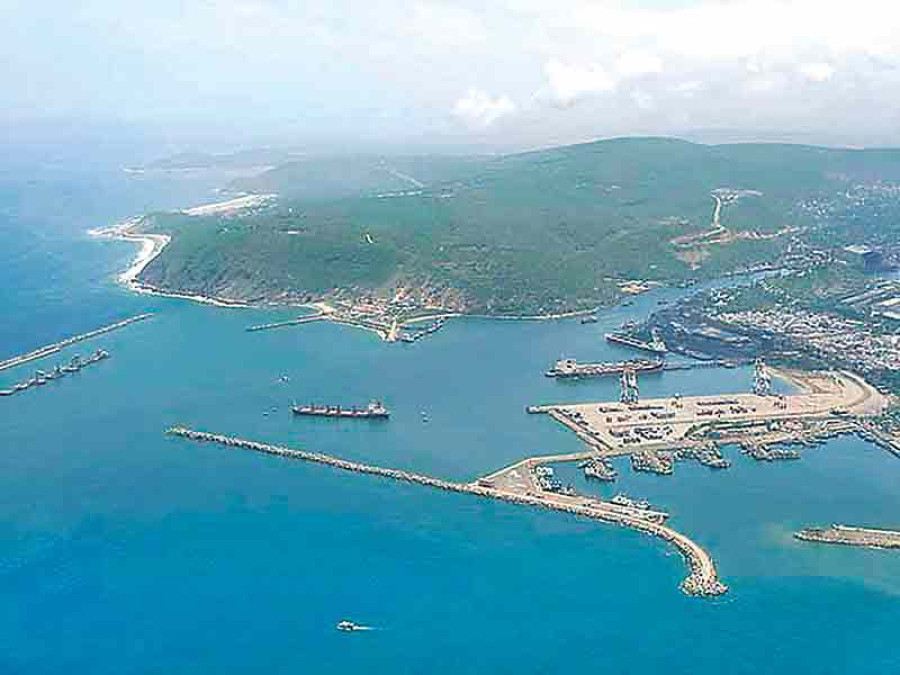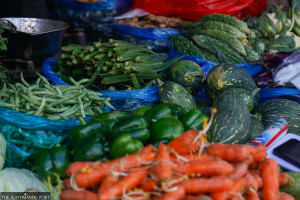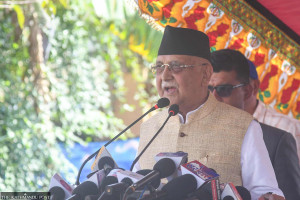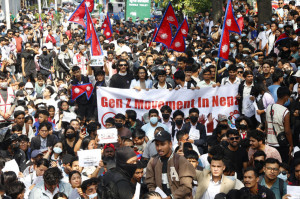Money
Hunt on for new ports
The government has been scouting for alternative ports in India for third country trade to replace congested Kolkata Port in a bid to cut costs and permit movement of large volumes of cargo.
The government has been scouting for alternative ports in India for third country trade to replace congested Kolkata Port in a bid to cut costs and permit movement of large volumes of cargo.
Nepal started using Vishakhapatnam Port last year, but few traders have been using it, so the government has been looking for other deep water ports. According to the Ministry of Commerce, Dhamra Port in Odisha and Mundra Port in Gujarat are possible options. Ministry officials recently made a study visit to Dhamra Port.
“As Indian authorities are positive about providing access to these two ports, we conducted a preliminary study of Dhamra Port,” said ministry spokesperson Rabi Shankar Sainju. “Ports operated by private companies seem to provide more efficient service compared to other ports including Kolkata that Nepal has been using for third country trade,” Sainju added.
As per the ministry, Nepal will likely ask India to allow it to use the two new ports during the next intergovernmental committee (IGC) meeting scheduled to be held in Kathmandu.
Nepal currently conducts third country trade through Kolkata and Vishakhapatnam ports. Traders have been complaining that congestion at Kolkata Port has forced them to pay high detention and demurrage charges due to delays in cargo clearance.
Kolkata Port can only serve feeder vessels due to its shallow water. Cargo needs to be transshipped to feeder vessels from mother vessels in Singapore, which raises the ocean freight cost. Additional costs are incurred due to uncertain delivery times for Nepal-bound cargo from Kolkata Port.
Although Vishakhapatnam was expected to reduce hassles and unforeseen costs like detention and demurrage charges, it has not been able to attract traders and shipping liners. Sainju said traders were reluctant to use the port due to lengthy documentation processes and its poor infrastructure.
Traders importing goods through Vizag have to go all the way to the Nepal Embassy in Delhi to get their clearance approval. Similarly, they have been facing lengthy procedures to send letters of credit (LC) and other documents.
Sainju said banks needed to send the LC via Nepal Rastra Bank to the Nepal Embassy in Delhi. “As the concerned banks and the central bank wait until they have collected a pile of documents and send them once a week, it takes several days to obtain the approval,” he said. “Besides, traders have been complaining about efficiency at the port due to lack of infrastructure.”
The Nepal-India transit treaty allows Nepal to use 15 entry-exit points for third country trade. The agreement has also specified routes from Kolkata and Haldia to Sukhia Pokhri, Naxalbari (Panitanki), Galgalia, Jogbani, Bhimnagar, Jayanagar, Bhitamore (Sitamarhi), Raxaul, Nautanwa (Sunauli), Barhni, Jarwa, Nepalgunj Road, Tikonia, Gauri-Phanta and Banbasa.
India has agreed in principle to allow Nepal to use Jawaharlal Nehru Port in Mumbai and Kandla Port in Kutch District, Gujarat too for third country trade. However, the modalities for implementing the decision are yet to be decided.
As per a study report unveiled by India’s Ministry of Shipping, Kolkata Port ranked seventh in cargo traffic handling and third in containerised traffic handling among 12 major Indian ports in 2012-13. Kandla and Jawaharlal Nehru ports handled the highest amount of cargo and container traffic, according to Indian authorities.
“Given their performance in handling cargo and container traffic, Jawaharlal Nehru, Vishakhapatnam, Kandla and Paradip ports can be used in addition to Kolkata Port for Nepal’s third country trade,” Sainju said.




 22.12°C Kathmandu
22.12°C Kathmandu













